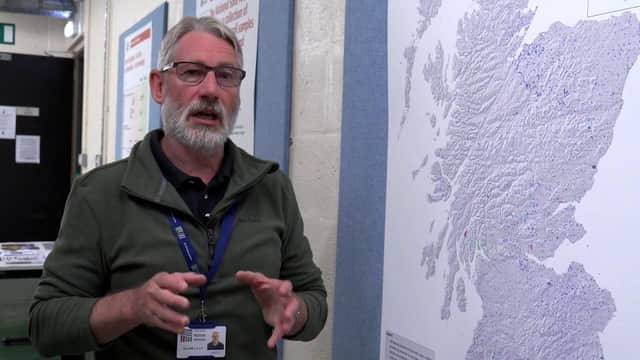New app helps to combat problem of soil erosion


Aimed at providing farmers, land managers and the public with a quick, easy way to learn about soil erosion in Scotland the app has been created by soil scientists at the James Hutton Institute and is available for Android and I-Phones.
With soil structure and health likely to play an important role in future farm policy the app aims to helps users to understand and identify different types of soil erosion. It also makes it possible to contribute user-generated records and images for adding to a shared map of sites of recorded erosion.
Advertisement
Hide AdAdvertisement
Hide AdSoil scientist, Dr Allan Lilly, one of the researchers behind the app, said:
"Soil erosion occurs when soil particles break off from the soil surface and are moved across the land either by flowing water or by the wind. We find erosion occurring across the country, in both the uplands and the lowlands. Footpath erosion can also occur in localised areas.
He said the most obvious effect of soil erosion is the loss of soil:
“You may have seen soil washed out of fields and onto roads or into rivers and streams. This is not just bad for farming through the loss of soil and nutrients but the nutrients in the eroded soil can pollute our rivers and the soil particles themselves can smother the riverbeds, damaging breeding grounds for fish.
Lilly added that erosion of peat soils could cause water pollution - but could also be responsible for releasing the greenhouse gas, carbon dioxide, into the air.
It is proposed that app users can help researchers understand and monitor soil erosion by sending their records and photos whenever they find evidence of soil erosion – and the researchers said that collecting this information was the first critical step to being able to tackle the problem.
The James Hutton Institute holds a huge amount of data on Scotland’s soils and landscape, acquired over many years. This data has been used to develop a model and maps of the risk of erosion happening. By answering a few simple questions in the app, users can help improve the understanding of where, when and why erosion occurs and help find ways to reduce its harmful effects.
“We are keen to hear from land managers, members of the public and other agencies if you think the soil erosion recording app is useful in helping to reduce soil erosion and if you are likely to use it. We are also interested in what disadvantages you see in having this app and website available to everyone,” Dr Lilly added.
The Soil Erosion Scotland app is free to download and use and is available on the App store and on Google play. There is also a website with the equivalent tools at soilerosion.hutton.ac.uk.
Comments
Want to join the conversation? Please or to comment on this article.